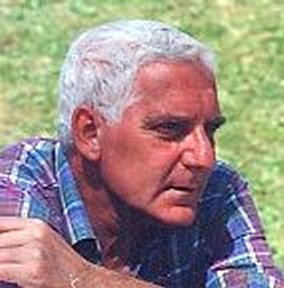|
January,
2008
Prof.
Giuliano Palmieri passed away
The
well-known student, a great lover of the Fanes' saga, departed
life just before Christmas
| BIOGRAPHICAL
NOTES
Giuliano
Palmieri was born at Longarone (Belluno) in 1940. He
followed Classical studies and took his degree at Padua
with a dissertation on the topographical structure of roman
Italy, and of the Venetian area in detail, according to
local towns' agricultural subdivisions vs. military centuriation
grids.
He lifelong taught Latin and Greek at the Classical
high school of Treviso, where he quickly proved a firm
reference point: his deep and well-digested culture, his
fairness, his probity, his unwaiving determination, made
of him one of the last legendary old-style professors, whose
remembrance has started slowly fading away.
He never relinquished archaeology, his life's first great
passion. He concurred founding, and was first director of
the Gruppo
Archeologico Trevigiano and also contributed to the
foundation of the Museo
di Crocetta del Montello (TV), of which he was Curator
for Archaeology. |
 |
As
much fond of the mountains, and of the Dolomites specially, as
he was of archaeology, he spent his vacations in his small home
in the Fiorentina valley, where his wife Anna's family came from.
This way he came in touch with a group of active local amateurial
archaeologists, among whom Vittorino Cazzetta, the discoverer
(among the rest) of the mesolithic burial site at Mondeval, who
tragically died in 1996. He thence cooperated with his precious
advice and assistance to the foundation and structuring of the
small but really interesting Museo
archeologico di Selva di Cadore.
A
deep connoisseur of the Dolomite's history and legends, in 1996
we wrote, together with Marco, his son, "I regni
perduti dei Monti Pallidi" [The Lost Kingdoms of
the Pale Mountains], almost entirely devoted to the clever reconstruction
of a thick web of interconnections between the Fanes' saga and
our notions of today about geo-topography, history, archaeology
and mythology of the Dolomites and of their surroundings.
His
other book, Le antiche voci dei Monti Pallidi [Voices
from the Pale Mountains of Old], that continues
the work of the previous title, mostly consists of the analysis
of the relationships between the Dolomitic legends (generally,
not the Fanes' one) and those of other European peoples. Of special
interest is the insight into the "masks" of several
Carnivals, from the Dolomites and outside.
_______
Among his several activities, I like recalling a "minor"
one, but clearly significant of his many-faceted interests and
of the deep affection he felt for his Dolomites: he owned a wide
collection of scaled models, all built by himself and perfect
to the most minute details, of the traditional wooden houses (tabià),
typical of the Fiorentina and Zoldo valleys.
Too
early stricken by an unforgiving disease, Giuliano Palmieri was
deprived of the happy and productive old age he was certainly
deserving. We all who were acquainted with him, cannot but miss
him with sorrow.
|
|
GIULIANO PALMIERI'S
BIBLIOGRAPHICAL REFERENCES:
Palmieri G.
1978: La cuspide di lancia in selce del monte Cernera,
in Preistoria alpina, XIV
Palmieri G. 1980: Treviso dalla preistoria all’età
romana, in Treviso nostra, I, Treviso
Palmieri G. 1982: Mùtara-muta: un appunto di toponomastica,
in I Convegno regionale dei Gruppi e delle associazioni di Archeologia
del Veneto, Treviso
Palmieri G., Paolillo A.1993: Il Piave dalla preistoria all’età
romana, in: AA. VV., La via del Piave dalle Dolomiti
a Venezia, Verona
Palmieri
G. e M. 1996: I regni perduti dei Monti Pallidi, Cierre
edizioni, Verona, 285 pgg.
Palmieri G., Valery C. 1997: Castelfranco Veneto, castrum
romano, in Aidanews, IV
Palmieri G. 1998: Karl Felix Wolff e l’archeologia,
in Mondo ladino, XXII, Vigo di Fassa
Palmieri G. 2002: Le antiche voci dei Monti Pallidi,
Ed. Canova, Treviso, 168 pgg.
|

